Acquisitions: From the collection of Mazaleyrat
Auteur:
Don Duco
Original Title:
Aanwinsten: Uit de collectie van Mazaleyrat
Année de publication:
2013
Éditeur:
Amsterdam Pipe Museum (Stichting Pijpenkabinet)
Magazine:
Nieuwsbrief Amsterdam Pipe Museum
Description :
The purchase of spectacular figure pipes by the Duméril Leurs company in Saint-Omer.
In this acquisition section, the clay pipe has been more or less neglected for a long time. We have chosen to mention other newly acquired pipes of alternative materials. This is now changing thanks to a major purchase of more than a hundred clay pipes from the collection of the well-known French collector Daniel Mazaleyrat. On 20 March 2013 an auction house in Paris offered an impressive range of pipes in clay and porcelain from his estate.
Mazaleyrat was a famous French collector, of the same generation as Gilbert Guyot, Bertrand Lazard and Denise Corbier who all shared their passion during evenings in Parisian cafes. As a teenager Mazaleyrat started his collection, which he continued his entire life. Daniel Mazaleyrat focused on the French figural pipe with special interest in clay and porcelain. In the course of more than fifty years he brought together a wide collection of several hundred figural pipes. After his unexpected death a few years ago, the heirs finally decided to bring this group to auction. The Amsterdam Pipe Museum took advantage of this unique opportunity to complete the collection with some missing objects.
We can only discuss three examples we acquired of the total of thirty pipe bowls, in this case made by the renown French firm Duméril from Saint Omer. Duméril was founded in 1845 and produced in the forty years of its existence a unique and varied array of clay pipes. The exclusive nature of their pipes was apparent at the time, but even nowadays because they rarely show up on the market. In the 1970’s collector Daniel Mazaleyrat found an opportunity to purchase sixty different specimen in a single buy. With the recent acquisition the series of pipes of Duméril in our museum collection doubled!
Sitting Owl
This figural pipe of a sitting owl is one of the earlier creations by the Duméril company. Most remarkable is the subtle embossment of the feathers of this bird that are shown in detail. The bird is huddled and motionless, which makes the shape of the bowl somewhat undefined. Particularly unexpected is the fact that the back of the bowl and stem have remained completely undecorated. It just looks like the bird emerges from a smooth pipe bowl.
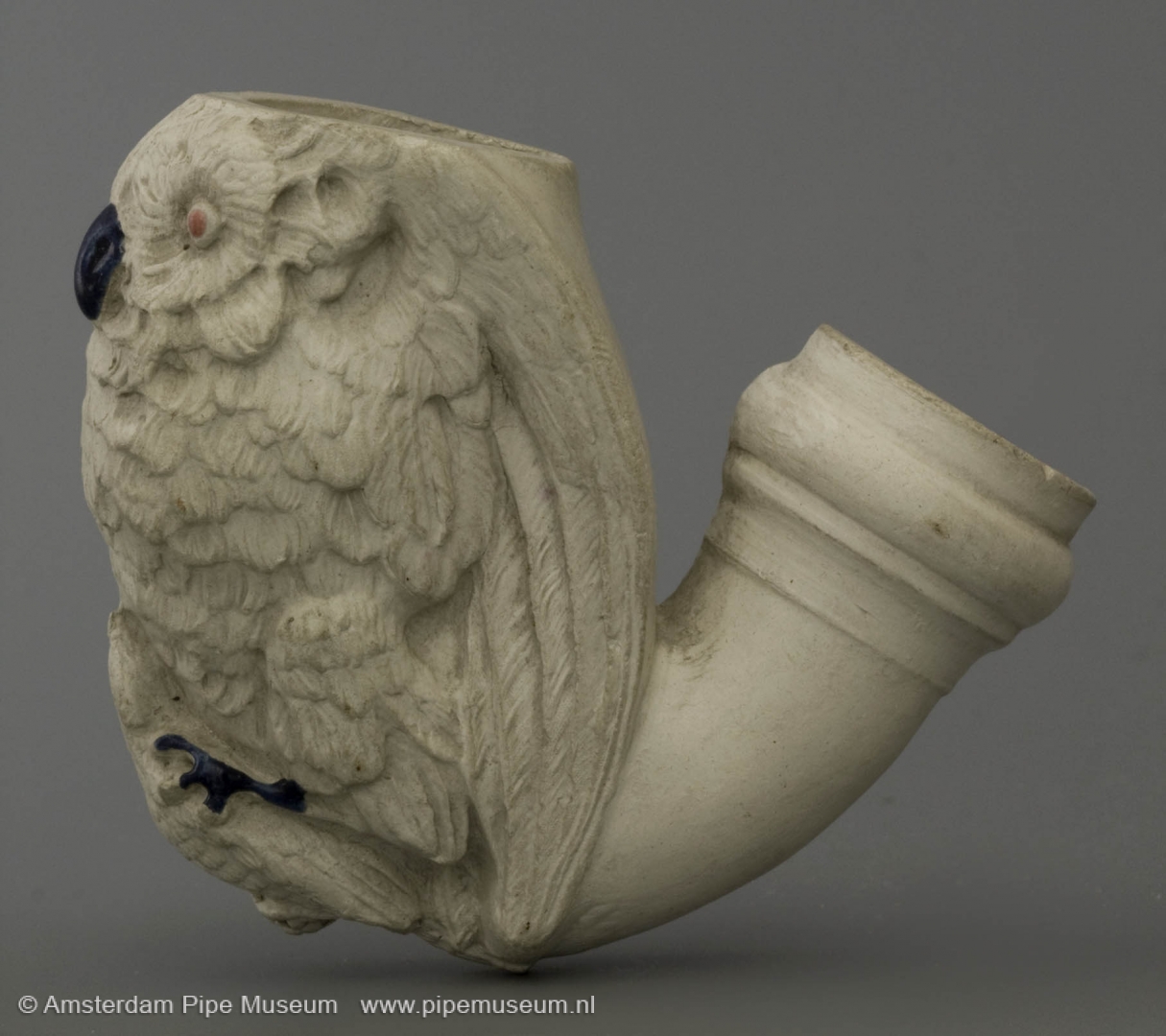
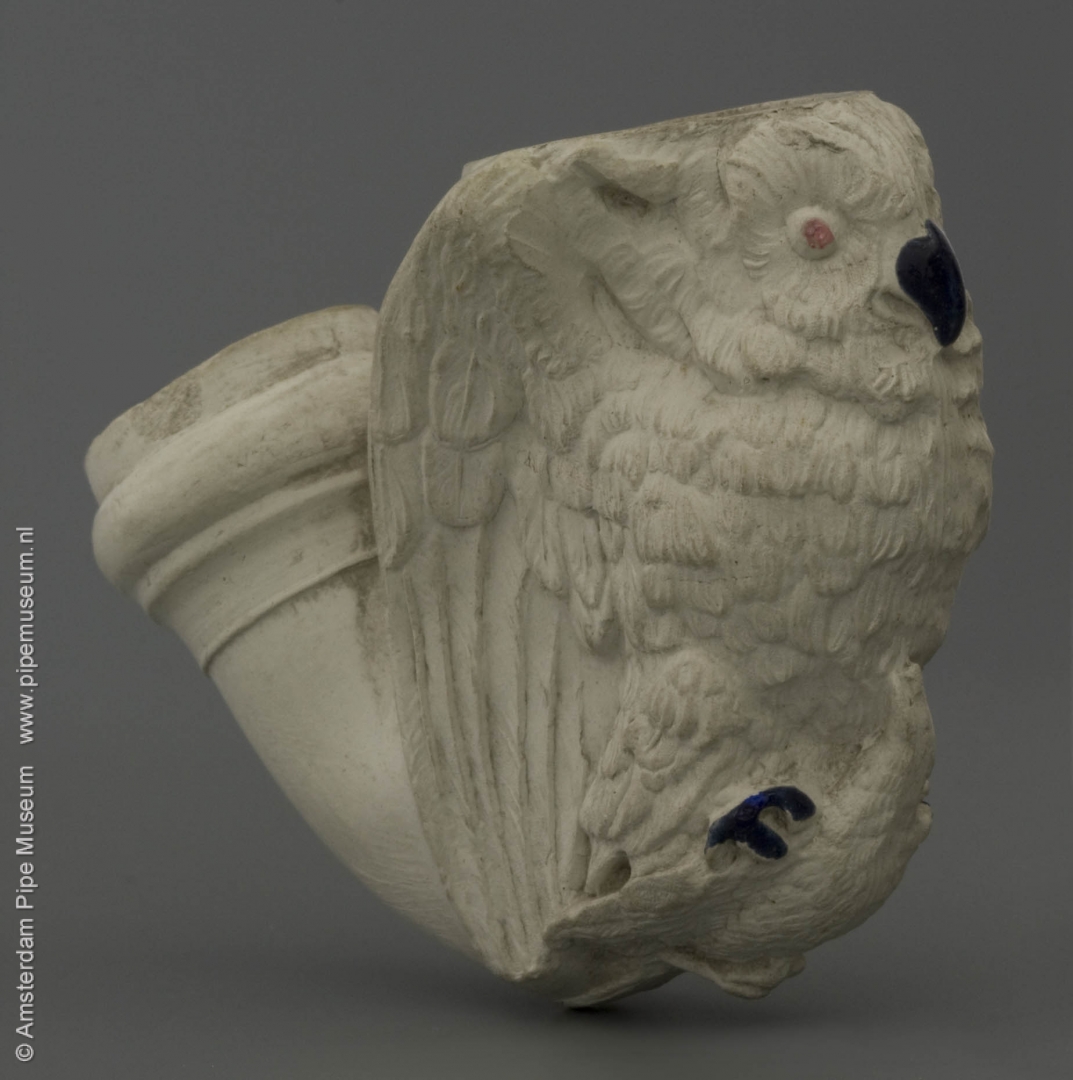
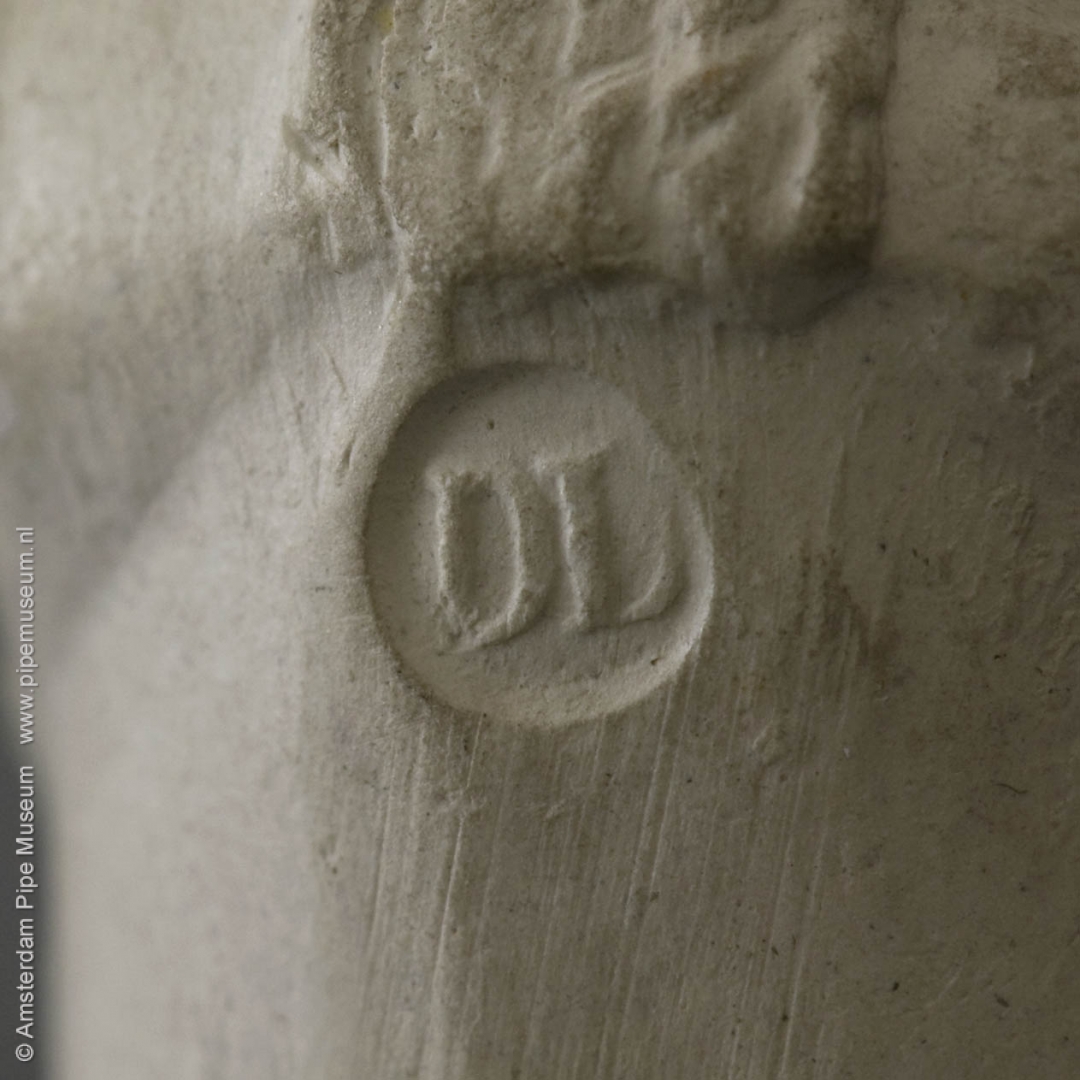
It concerns a virtually white pipe. The distinctive enamel paint, commonly used in luxurious French pipes, is omitted here. Only some details such as the small eyes and claws of the animal have a small pinch of enamel paint, respectively in pink and dark blue. These unusual colours prove that it is an early pipe, possibly even before the year 1850.
The later products of Duméril are provided with an extensive signature. At the production time of this particular pipe, the signing was not yet common use. As a brand designation we only find a small stamped circle with the letters DL for Duméril Leurs. The stamp is subtly applied at the bottom of the bowl at the transition to the stem. This type of inconspicuous signing indicates that at that time the pipe factories not yet focused on brand awareness, instead they seduced the customer solely by their particular designs.
Amsterdam Pipe Museum APM 21.467
The aborigine and the panther
One of the most distinctive pipes from the production of Duméril is this extraordinarily elongated pipe bowl with an unexpected scene. The narrow, funnel-shaped pipe bowl is shaped as the trunk of a palm tree with the characteristic scaly bark. An aborigine is clamped at the top of this trunk, chased by a panther. The man is just about to stick a dagger between the jaws of the panther.
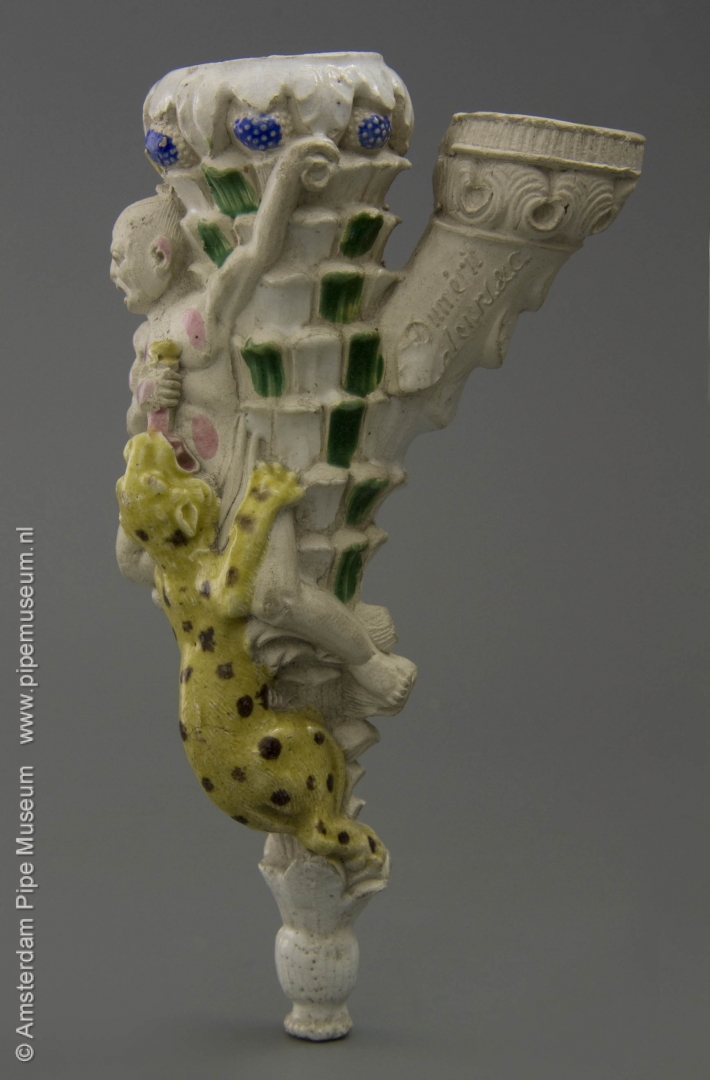
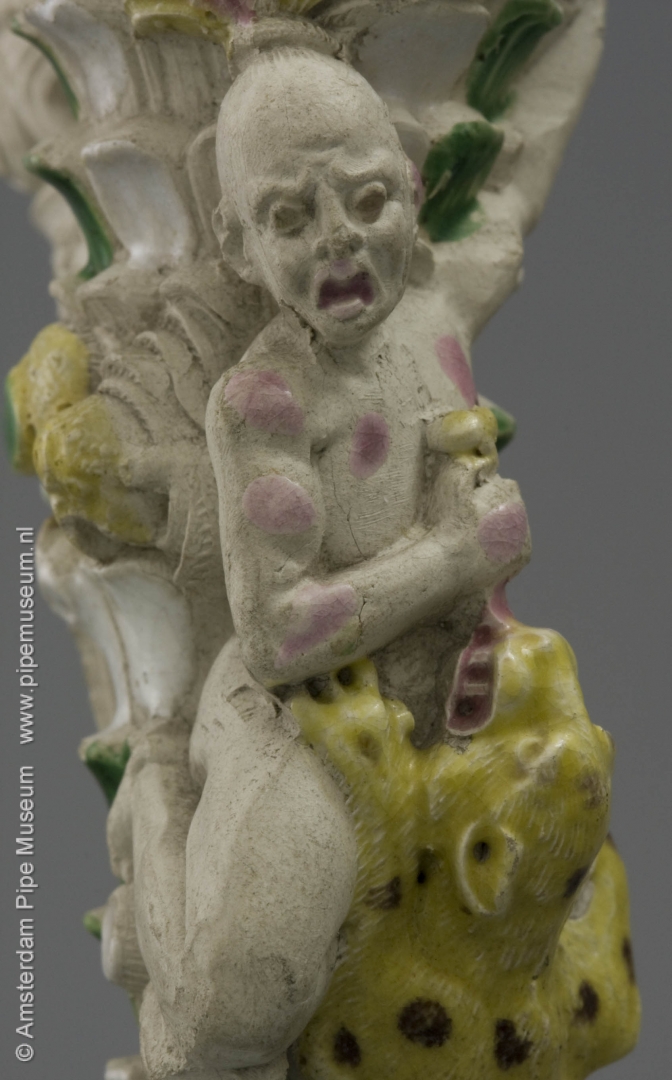
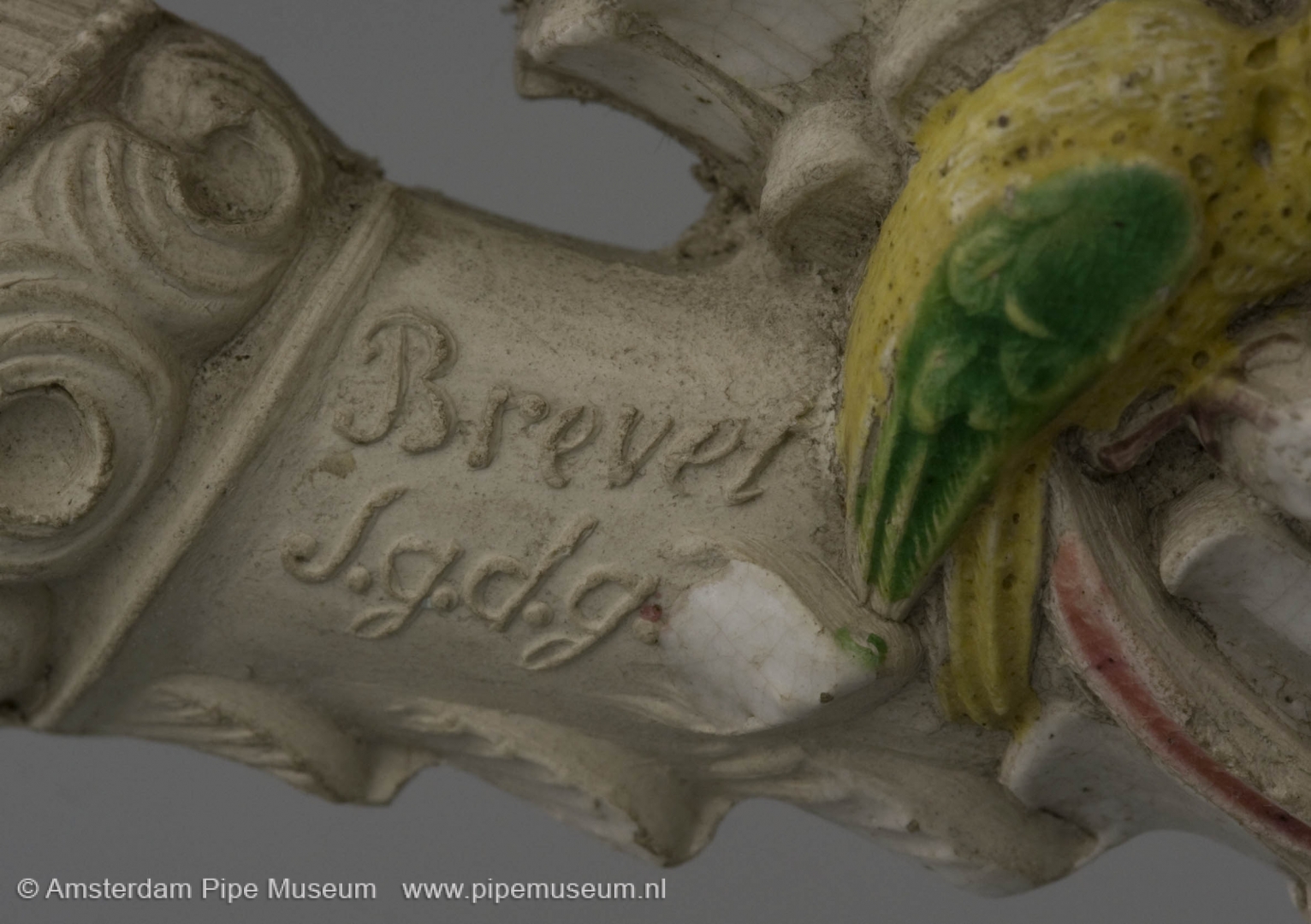
This pipe is illustrative of the imaginative, fairy-tale designs of which Duméril is able to express in their pipe designs. The small capacity pipe bowl in relation to the total height of the object, indicates that this product can be regarded as a show piece and not just a smokers utensil. The bowl is very narrow and six centimetres deep, while the total height is over twelve centimetres. In order to avoid risk of cracking during the firing of the pipe, the long decorative point is pierced from the bottom.
Like many of the Duméril products, the fine, white clay is decorated with multicolour enamel accents that highlight the scene. Eye catching is the dark spotted yellow panther. While smoking the look of the pipe changed: the white faded away in favour of the tobacco patina from yellow to dark brown after long use. The enamel shades remained unchanged but got a completely new effect by the staining background.
Finally, the embossed pipe makers mark is explicitly applied to the stem. We read not only the entire factory name but also the abbreviation "BSGDG". This abbreviation stands for breveté sans garantie du gouvernement, with which Duméril claimed the ownership of design of this pipe. However, without a national enforcement of copy-right. The date of this artistic pipe should be somewhere around 1860.
Amsterdam Pipe Museum APM 21.465
Spinster
Most French figural pipes are facial portraits, humans are rarely shown in its entirety. The company Duméril made an exception and did have some, as the pipe bowl shown here proves. At the front of the bowl a spinster is sitting, shown in full length, as she carries out her work. Between her legs she holds the raw wool, in her hand a large spinning reel on which the spun yarn is wound. She is leaning against the pipe in a natural way. The curved back of this pipe bowl is formed by two leaves. Again, this is more a fantasy than a representation related to a contemporary event, as is the case with many figural pipes.

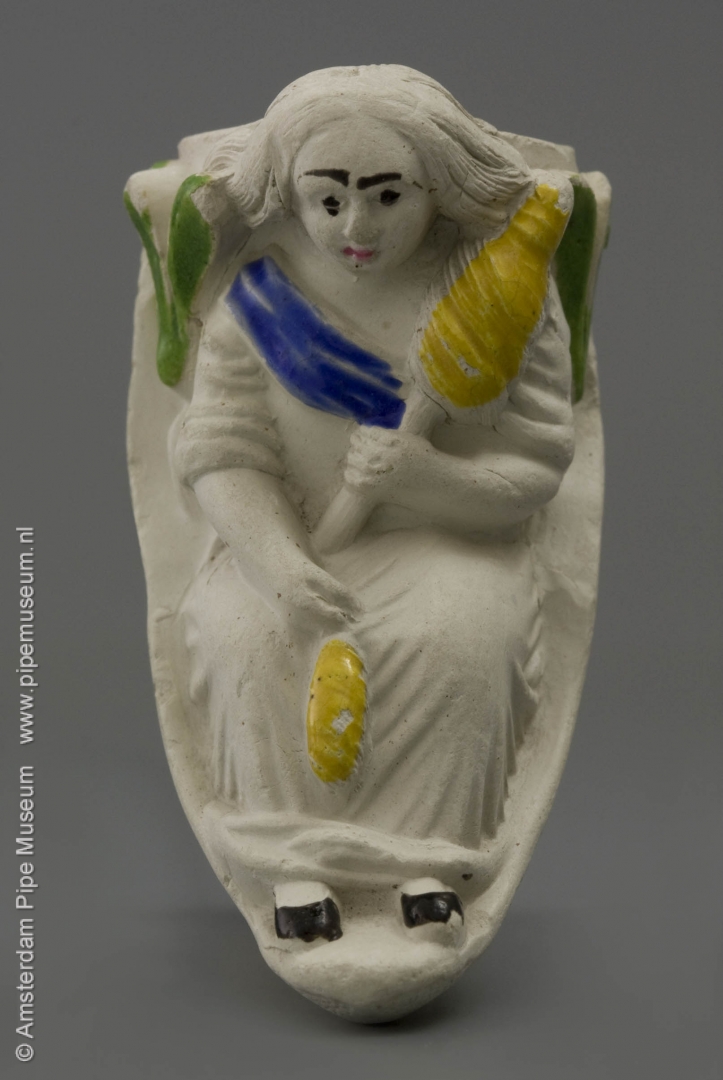
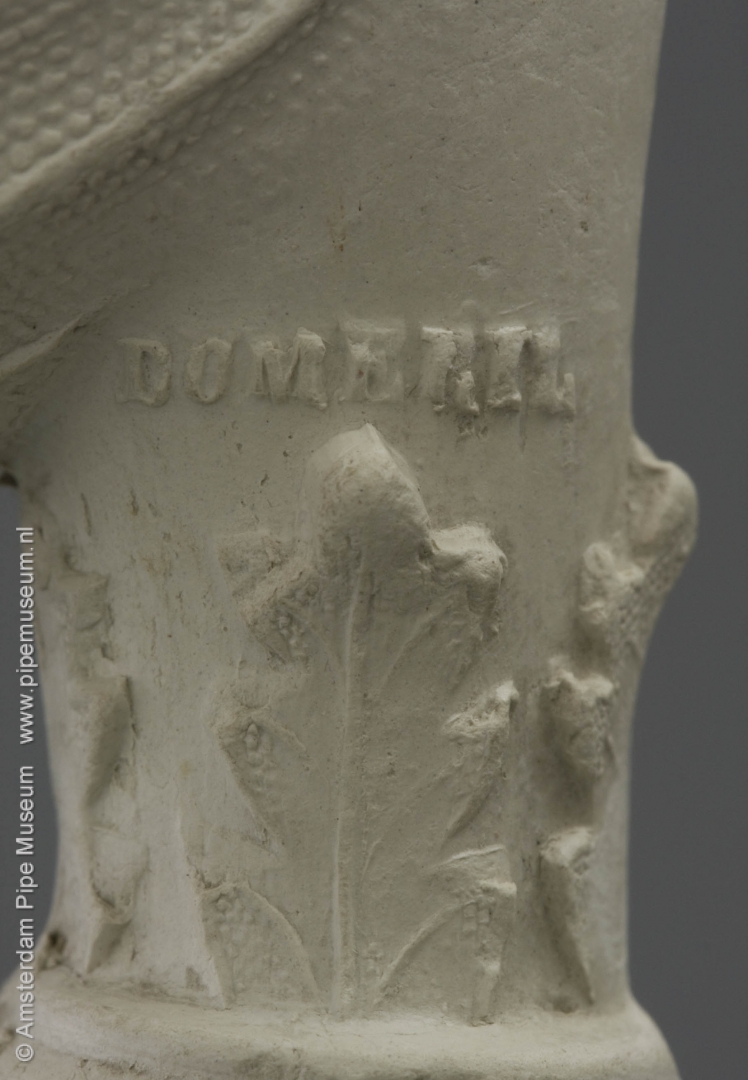
The concept of this pipe is more often used by Duméril. Besides a spinster, another design shows a seated man smoking his pipe, which incidentally was also present in the collection of Mazaleyrat and now is in the Amsterdam Pipe Museum collection as well. The repetition of certain concepts of decoration underlines the industrial way of operating at Duméril. We recognize this phenomenon at other clay pipe factories as well.
A striking aspect of the pipes made by Duméril is the maximum porosity of the clay. Profitable for the smoker, this meant an optimal tobacco moisture absorption by the pipe itself. On the other hand, downside was the great vulnerability which is one reason why so little material of this particular firm has survived. The clay chipped easily at the smallest impact, lowering the appeal of the design rapidly.
The maker’s mark on the pipe shows a final phase of Duméril’s practice. Rather inconspicuous on either side of the stem we read the words Duméril and Leurs, the two partners in the factory. The relevance of the factory name seems to vanish in that period, and the marking method no longer displays the pride in the product. From 1875 it goes downhill with Duméril and until 1885 the management is only down-sizing, shrinking to the final closure of the company in 1885. Design, choice of materials, the adhesion of the enamel and the marking of the product unveils this downfall already.
Amsterdam Pipe Museum APM 21.485
© D.H. Duco, Amsterdam Pipe Museum - the Netherlands, 2013.